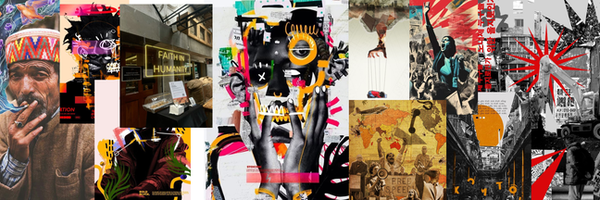Finding Hope: Analysing Crises Using Machine Learning and a Statistical Analysis of Data and News
Grade 9
Presentation
Problem
The Problem
Humanitarian Analysts have a lot on their plate, often working incredibly hard to forecast risks. There are thousands of factors that contribute to risks escalating, and it is physically impossible for an analyst to account for all of that alone. There are also other problems such as analysts missing important updates that key sources add. This can be disastrous, as one change in situation can change a country from on the brink of a crisis, to in an urgent emergency.
Method
Method
The main objective of this project is: "to create a tool to assist analysts in acquiring the information they need in a timely manner." I will address the method of meeting this objective in three main ways: the materials used, the use of the materials, and the testing of the product.
Firstly, the materials used. All of these materials were online. These materials were Streamlit, APIs, Visual Studio Code (informally known as VSCode), and Python Libraries. In brief Streamlit is a website that can be used to build other websites that are hosted for free. These websites can be built entirely in python. APIs are essentially ways to allow devices to communicate and share information. Note that API Keys and APIs are two different things. API Keys are strings of numbers and letters allowing for access to an API. Visual Studio Code is an IDE which allows the user to code on a platform designed for a smooth experience. Python Libraries are essentially downloadable bits of code which allow the user to create an application without using billions of lines of code.
These materials alone were not enough. Rather these materials needed to be used together in a purposeful manner to create an effective product. Firstly, all the libraries necessary were imported. To import them I used a requirements.txt file. The libraries used are: pandas, streamlit, datetime, numpy, gdelt, sckit-learn, wordcloud, matplotlib, openai, pytrends, and nltk. Aside from the libraries in the txt file, there were some other page specific imports. These were from modules.actors import gdelt_wrapper, from modules.actors import crisis_cameo_codes, country_code, from modules.charts import bar_chart, word_cloud_image, from modules.agent import run_expert_agent, from nltk.sentiment.vader import SentimentIntensityAnalyzer. and import time. Many of the libraries imported were also abbreviated. This includes numpy being imported as np, pandas being imported as pd, and streamlit being imported as st.
All of this code was done in VSCode, with the code then being pushed to github. APIs were used to get the data that was then analyzed by a Large Language Model (LLM). This LLM uses OpenAI. After getting the necessary keys I could get the data, put it on the website, and analyze it. It took quite a bit of time to understand how to use streamlit and make an app with this new website.
Finally, to test this website I asked my peers and acquaintances about what they thought. How easily do you understand this? Do you believe that this looks visually interesting? How easy is it to navigate this website? All of the responses gave me a better understanding of how to design this website better.
Analysis
Conclusion
Conclusion
Creating a tool that assists analysts in obtaining the information that they need is a hard, yet wholly obtainable objective to complete. The Humanitarian Principles that the European Commission outlines are important factors to keep in mind. They were guiding principles to make sure that this project and the sources used were ethical. The creation of the website used a variety of strong sources and new resources. Despite the many setbacks, out of them came a website that fulfills its purpose. The website shows an analysis of the data with key information about humanitarian aid presented as well. There are many improvements to be added to elevate the project to the next level and make it even more effective than it already is.
Citations
References
ACAPS. (n.d.). See the crisis change the outcome. ACAPS. https://www.acaps.org/en/
Concern Worldwide. (2024, August). Humanitarian Aid, Explained. Concern Worldwide. Retrieved November, 2024, from https://www.concern.net/news/humanitarian-aid-explained
Concern Worldwide. (2025, January 15). The ten worst humanitarian crises to know in 2025.
European Commission. (n.d.). Humanitarian aid. European Civil Protection and Humanitarian Aid Operations. Retrieved November, 2024, from https://civil-protection-humanitarian-aid.ec.europa.eu/what/humanitarian-aid_en
European Commission. (n.d.). Humanitarian principles. European Civil Protection and Humanitarian Aid Operations. https://civil-protection-humanitarian-aid.ec.europa.eu/who/humanitarian-principles_en
The GDELT Project. (n.d.). The GDELT Project. GDELT Project. https://www.gdeltproject.org/
Is humanitarian aid actually reaching people in Gaza? (n.d.). Youtube. Retrieved January, 2025, from https://www.youtube.com/watch?v=6oZNMMfB0Uk&pp=ygUQSHVtYW5pdGFyaWFuIGFpZA%3D%3D
Kurtzer, J. (2019, September 18). Never More Necessary: Overcoming Humanitarian Access Challenges. Center For Strategic and International Studies.
Médecins Sans Frontières. (n.d.). What MSF does. Doctors Without Boarders. https://www.doctorswithoutborders.ca/
OCHA. (2021, April 22). What’s wrong with the humanitarian aid system and how to fix it - Remarks by the Under-Secretary-General for Humanitarian Affairs, Mark Lowcock, at the Center for Global Development on Proposal for an Independent Commission for Voices in Crisis. Relief Web.
Trump's aid freeze sends shock waves across Africa | DW News. (n.d.). Youtube. Retrieved Februrary, 2025, from https://youtu.be/rH2Wj8WsIEs?si=EWENIa45FUTLrRM1
UN. (n.d.). Peace, dignity and equality on a healthy planet. United Nations. https://www.un.org/en/
U.N. coordinator describes challenges of providing humanitarian aid to Gaza. (n.d.). Youtube. https://www.youtube.com/watch?v=ohayL9FtLsE&pp=ygUQSHVtYW5pdGFyaWFuIGFpZA%3D%3D
UNHCR. (n.d.). Global Trends. UNHCR. https://www.unhcr.org/us/global-trends
UNICEF. (n.d.). 3 major obstacles to delivering aid in Gaza. unicef. https://www.unicef.org/stories/3-major-obstacles-delivering-aid-gaza
UNICEF. (n.d.). UNICEF, for every child. UNICEF, for every child. https://www.unicef.org/
World Vision. (2021, August 30). Humanitarian aid: what you need to know. World Vision. Retrieved October, 2024, from https://www.worldvision.ca/stories/disaster-relief/humanitarian-aid-and-assistance
Acknowledgement
Thank you to Irada Shamilova and Tim Gubski, for answering many of my code questions
Thank you Ms. Lai for organising the Westmount Charter Science Fair

